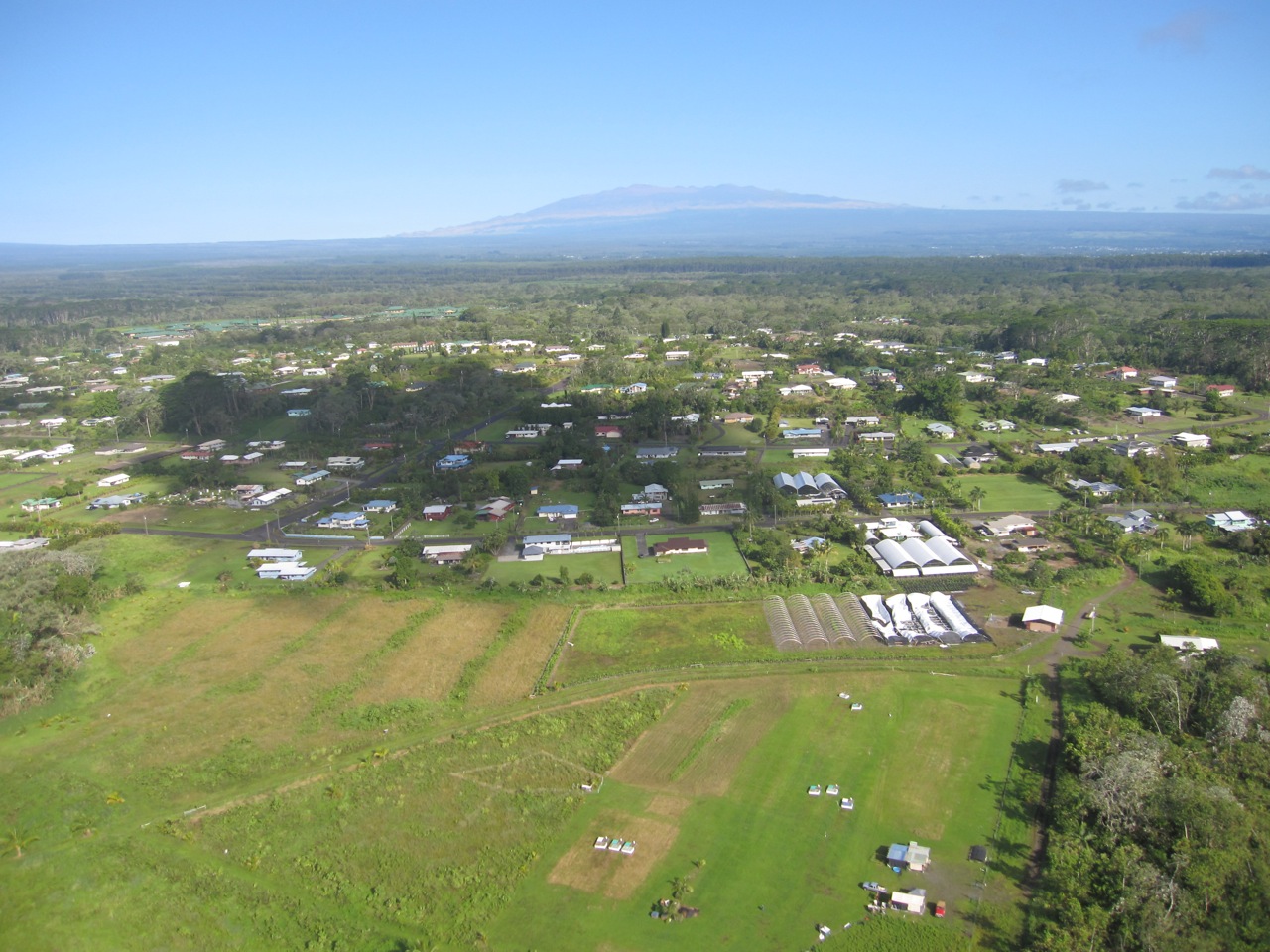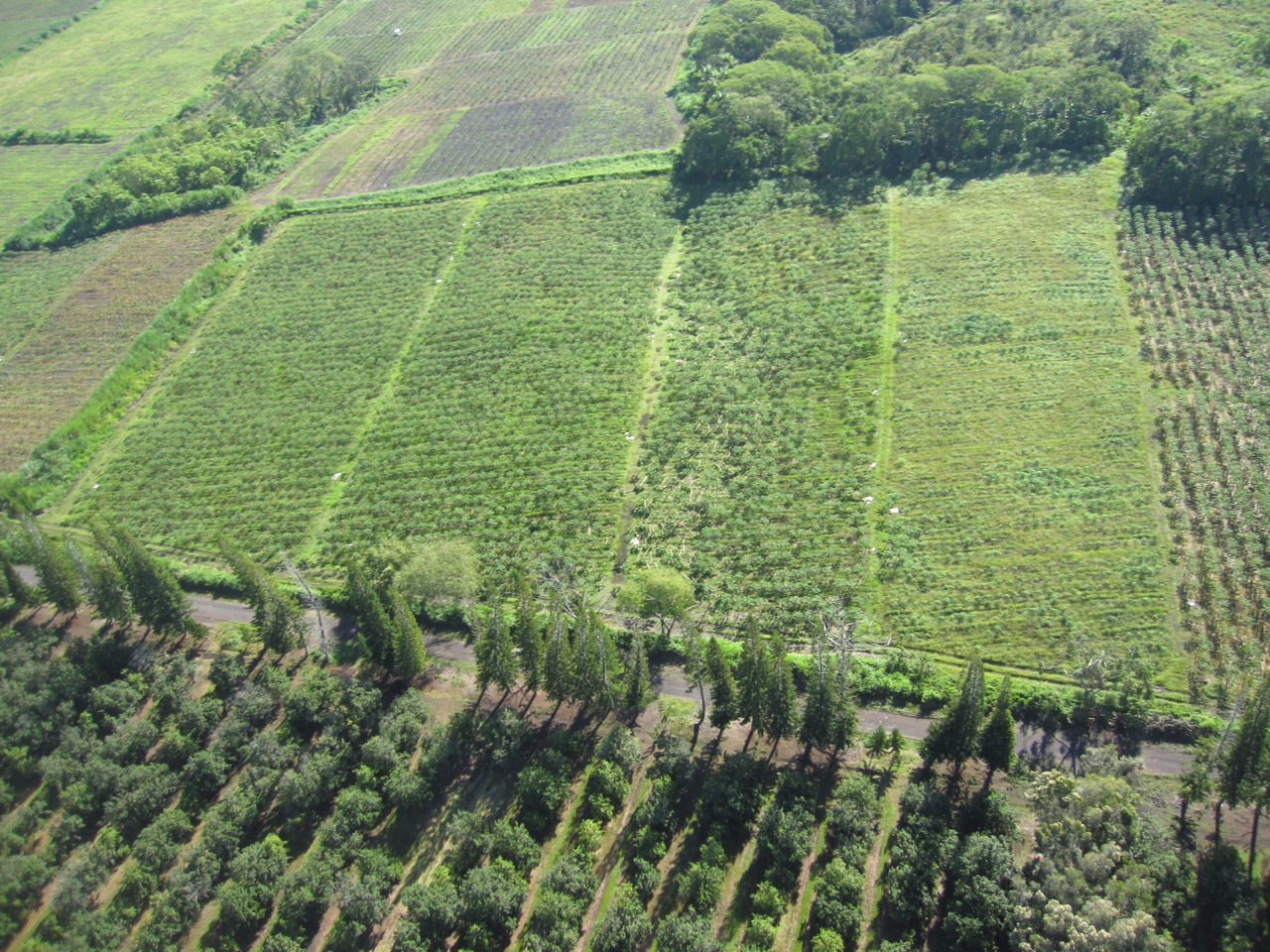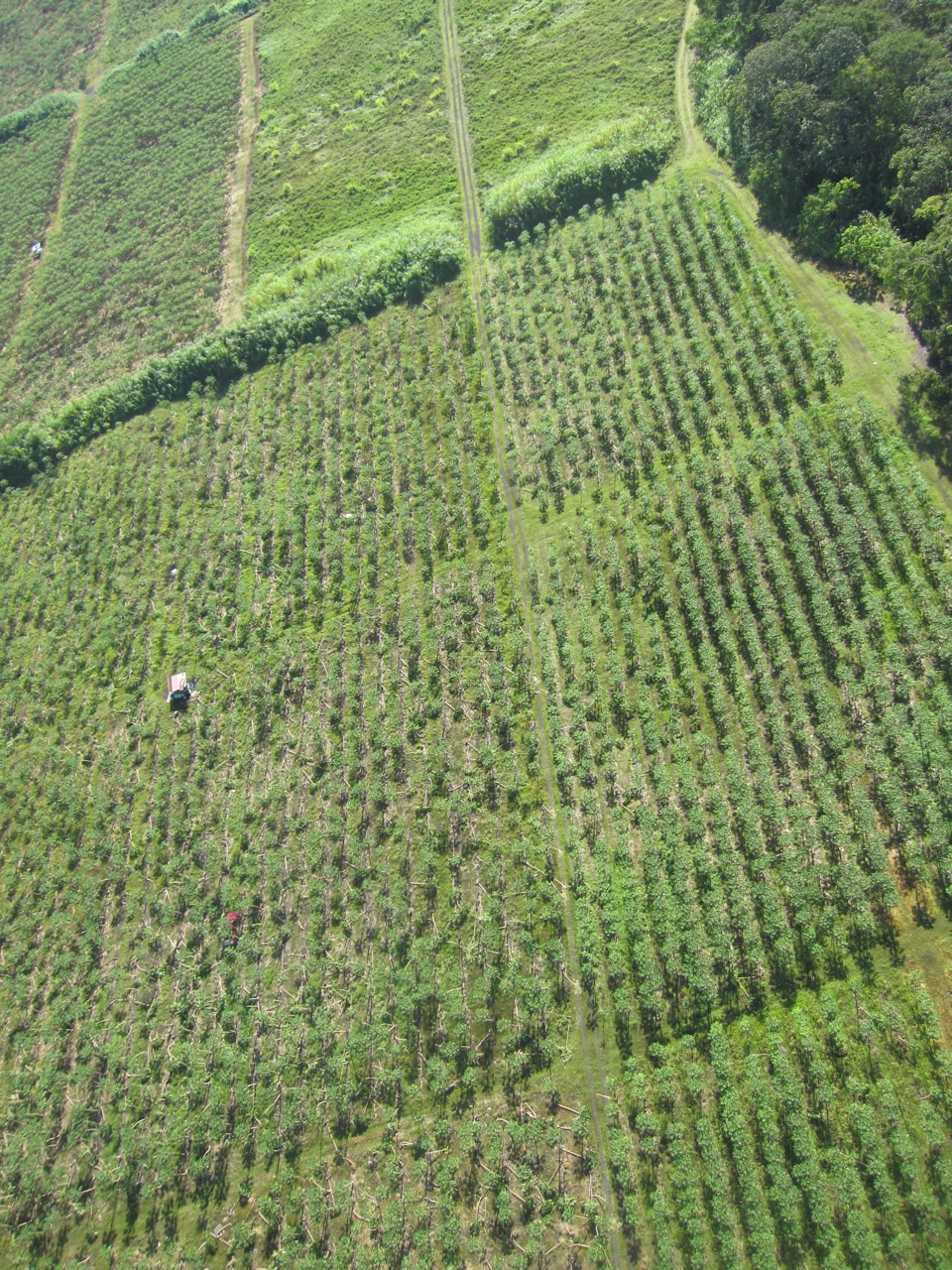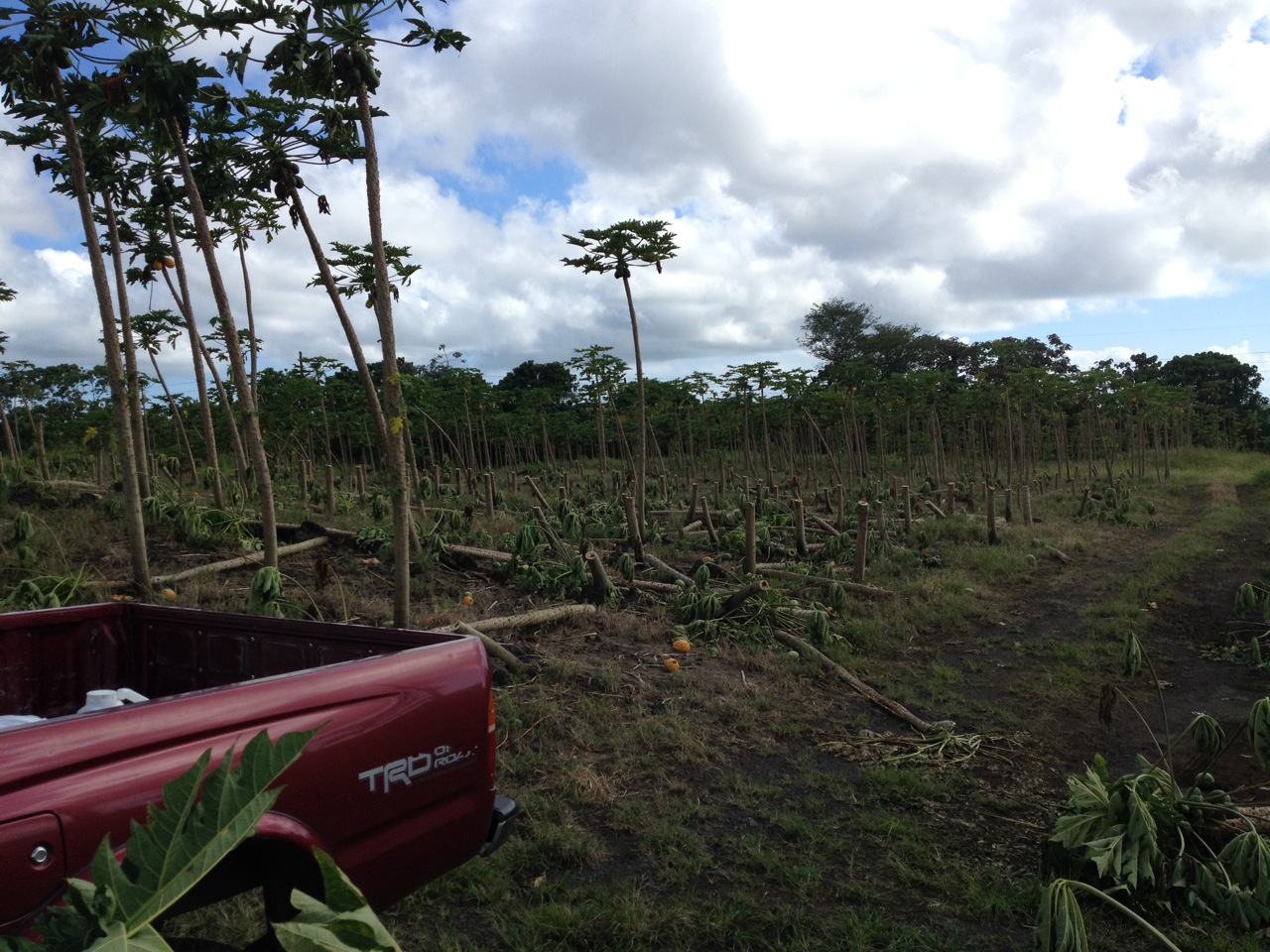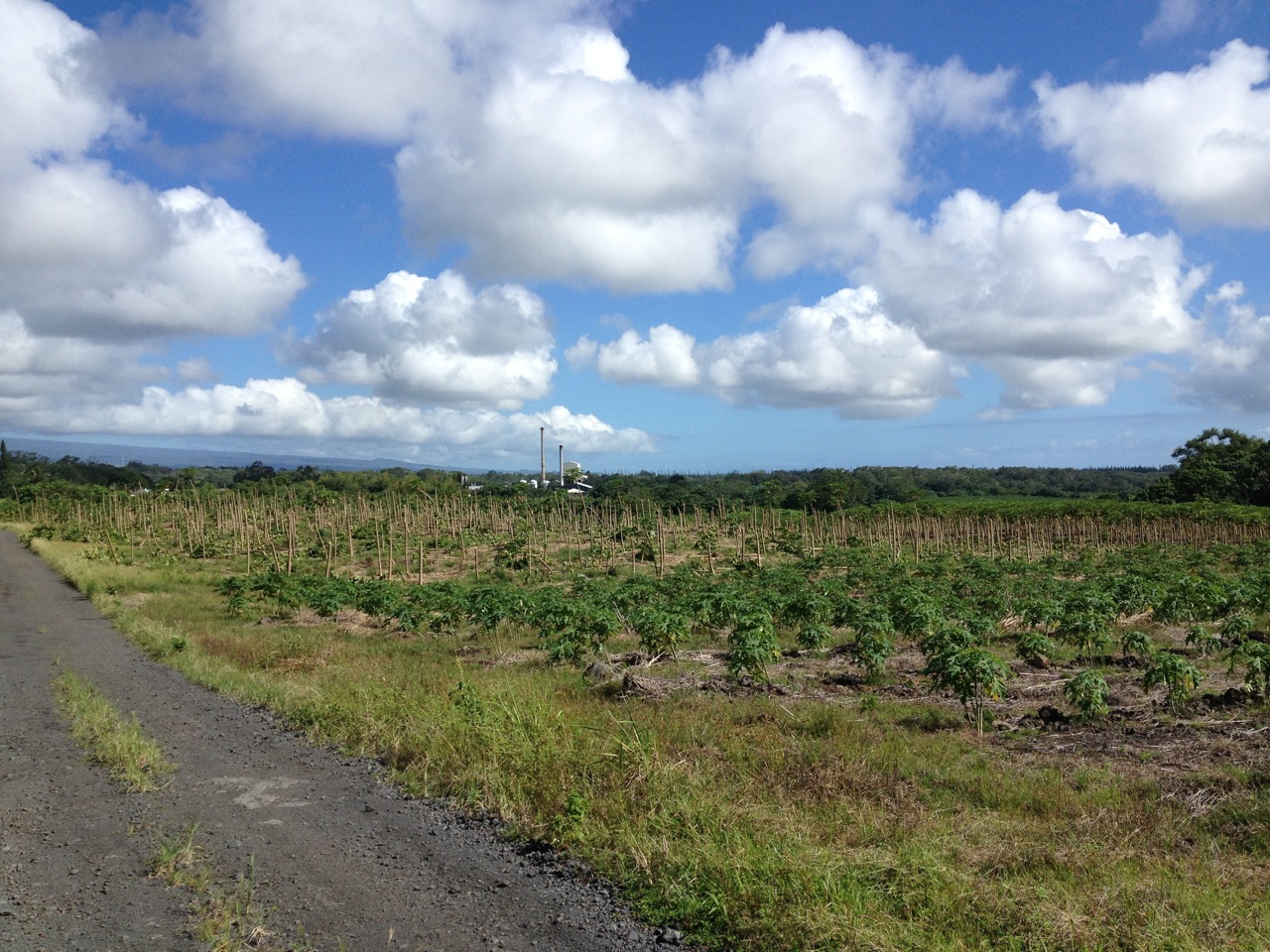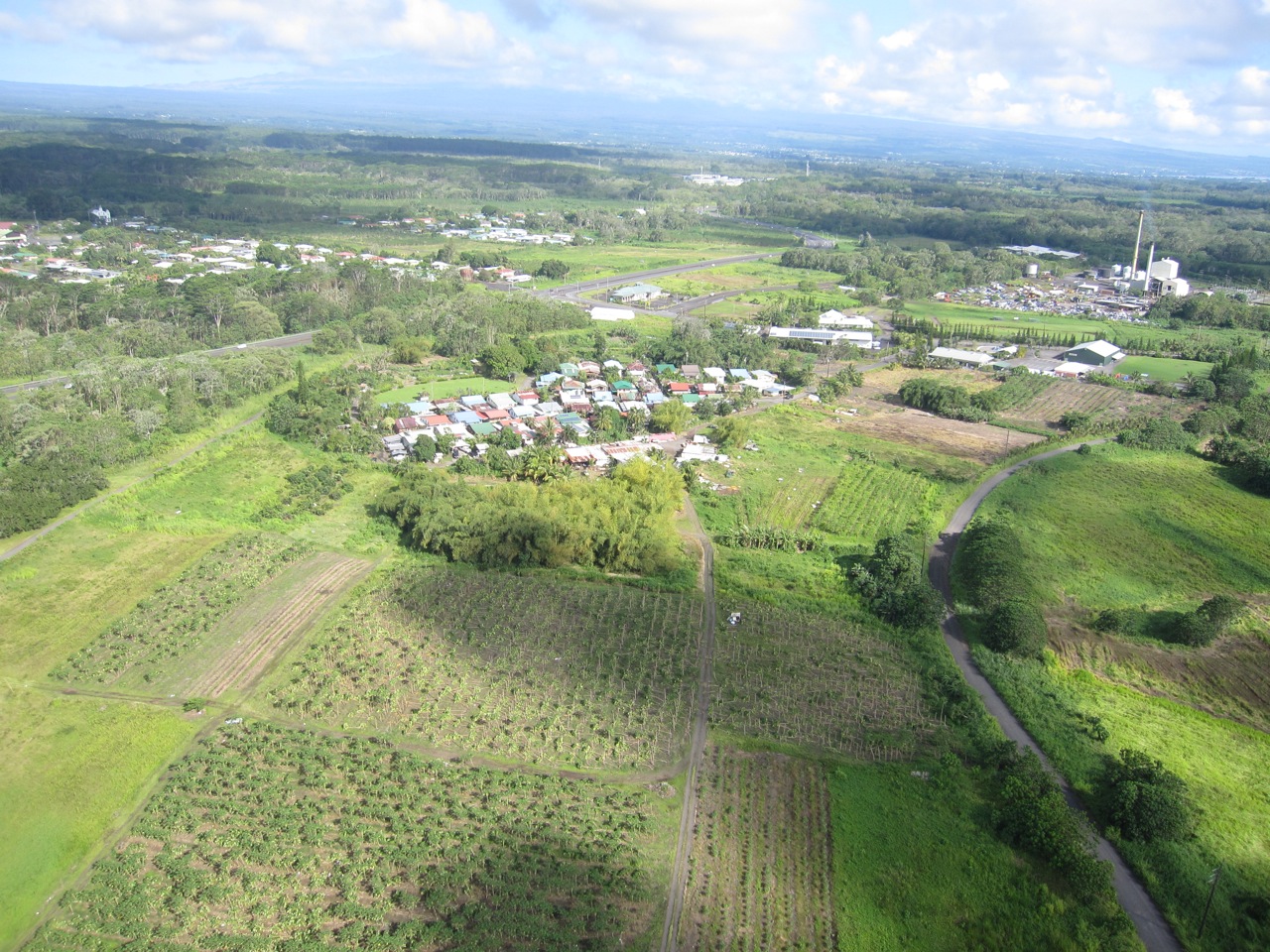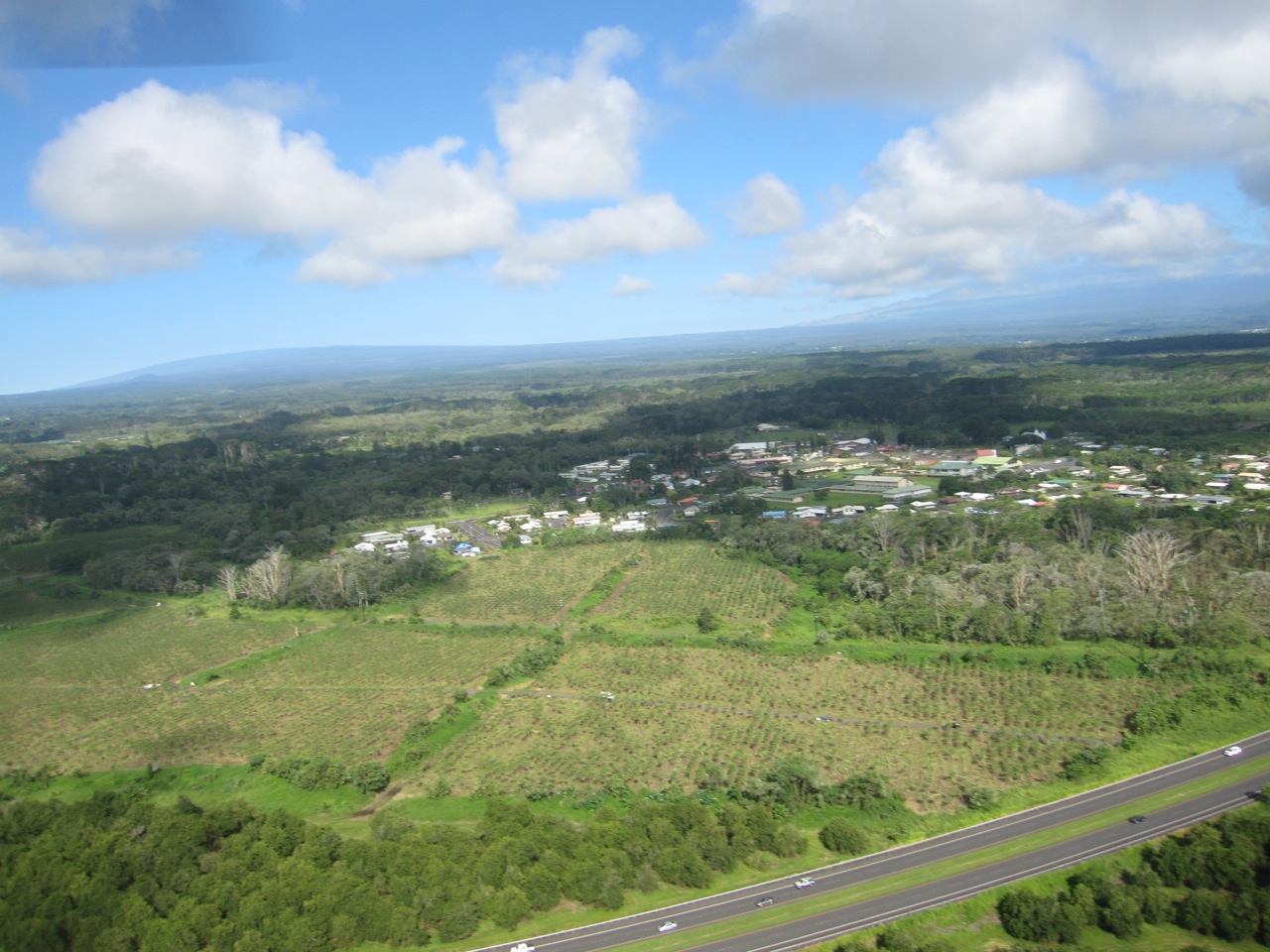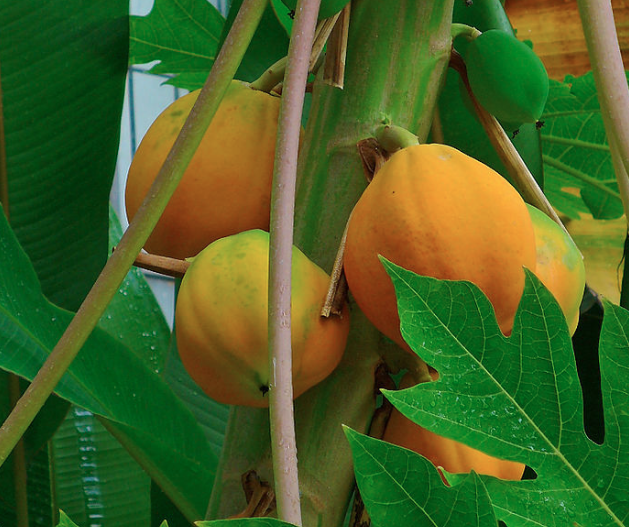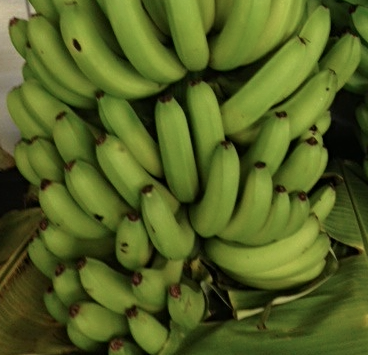Richard Ha writes:
There's an article in today's Hawaii Tribune-Herald called Ag Crops Sustained Extensive Damage From Iselle.
Everyone is busy gathering data as to the extent of damage. We just had a meeting of the Hawaii Farmers and Ranchers United and a preliminary discussion with the USDA Farm Services Agency, as well as the Board of Ag chair by phone. The outcome was that we needed to get clear data from which the various agencies could start to work. We are busy getting this done.
Ollie English from WH Shipman, Ltd., was up in a helicopter to get an aerial view and the various industry representatives gave a report.
We were interviewed by John Burnett of the Hawaii Tribune-Herald.
In addition to just numbers, those of us in the room heard a papaya farmer family describe how hard the last few cycles have been. A mom described how 10 acres of her family papaya farm had been cut down by vandals a little bit ago. Beside paying all the clearing, fertilizer and pest control costs, the crop that had been cut down represented the income to help one son to go to college. They were very discouraged and wanted to quit. Two of her sons told her it would be poho (wasteful) to not use the equipment that they already had. So the two decided that they would continue on. They had a strong outbreak of a fungus about a year ago. And that put extreme pressure on the family. But they persevered.
A year later, now, the new plantings were just ready to start harvesting. The fruit column was full and heavy. They were looking forward to two years of harvest where they hoped to recover the cash out and make some money. But Hurricane Iselle came through and snapped off all the heavily laden trees at the point where the most mature fruit were.
We in the room were quiet. We all know the despair that she, her husband, and two sons felt. This is representative of all the papaya farmers who had wind damage.
One of the independent papaya processors told of being in church and seeing a papaya farmer and his family. He told us that it brought tears to his eyes and that he couldn't look at the farmer. The overall sense of despair was very hard to take.
Colleen Hanabusa has met with farmers here more times than any county council member or any other politician for that manner, and that's why farmers really know and trust her. It's nice that she was on the island.


